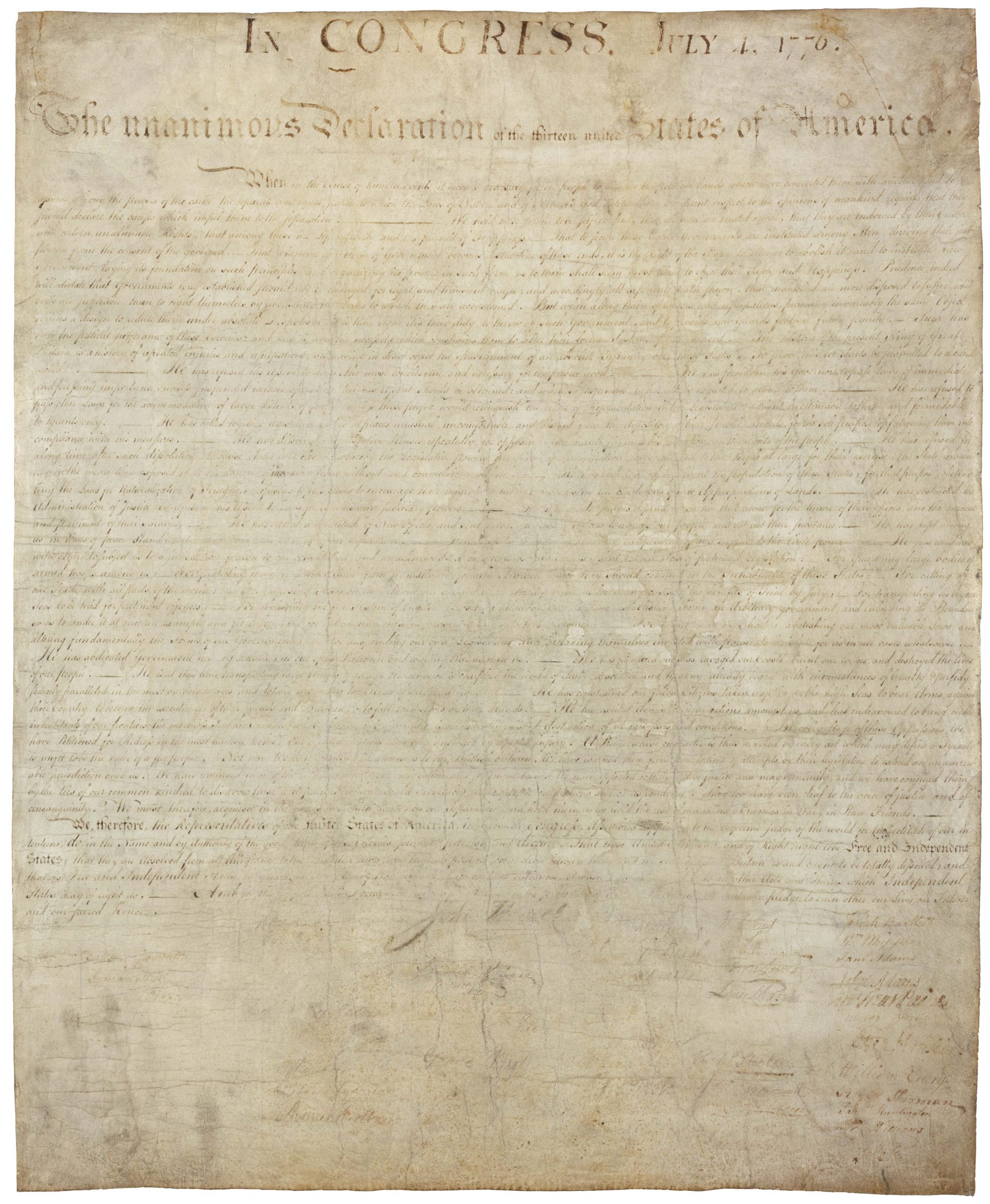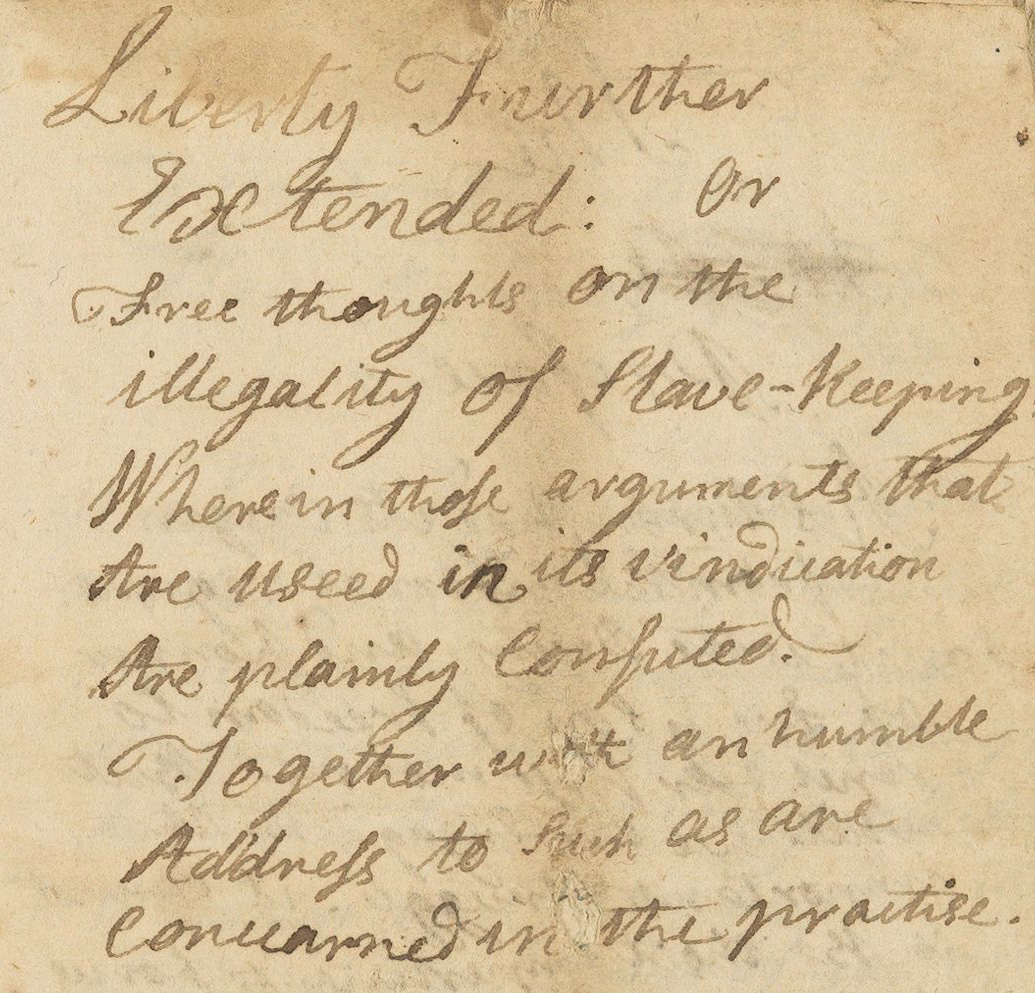Tracey Wilson
Educational Consultant, West Hartford Town Historian, and Witness Stones Project Director
TEACHER'S SNAPSHOT
Course Topics/Big Ideas:
Cultural Diversity and an American National Identity, Role of Connecticut in U.S. History, The Struggle for Freedom, Equality, and Social Justice
Town:
West Hartford
Grade:
Grade 8
Lesson Plan Notes
Lemuel Haynes was a bi-racial man from West Hartford who was raised as an indentured servant from early childhood until age 21. Haynes served briefly with a militia company in Massachusetts after the battles of Lexington and Concord. In 1776, at the age of 23, he wrote an unfinished, unpublished essay entitled, “Liberty Further Extended: Or Free Thoughts on the Illegality of Slave-keeping,” in which he explored the ideals of freedom and liberty, as used in the Declaration of Independence, and related them to enslaved people. Haynes’ manuscript illustrates that antislavery rhetoric far pre-dates the better-known abolitionist movement of the 1830s. The concept that freedom and liberty are God-given, natural rights and that governments can and should be held accountable for protecting those rights was applied by Haynes to enslaved Black people just as it was to American colonists by the writers and signers of the Declaration of Independence. In this activity, students will examine and compare the language and ideas behind these two powerful documents.
ESSENTIAL QUESTION
SUPPORTING QUESTIONS
- What freedoms did the colonists who wrote and signed the Declaration of Independence claim as their rights?
- In what ways did these colonists feel oppressed or not free?
- What persuasive language did these colonists use in the preamble?
- What arguments did Lemuel Haynes make on behalf of enslaved people?
- What persuasive language did he use?
ACTIVITY
1) Introduce the compelling question: What did “freedom” mean at the time of the American Revolution? Explain that students will be exploring this question through a close reading of two documents written in 1776.
2) Decide whether you want all of the students to look at both documents or break the class into 2 groups—one to examine the Declaration of Independence and the other to examine “Liberty Further Extended.” You may choose to provide students with original images of the documents to examine before providing the transcriptions. The transcription of “Liberty Further Extended” is highlighted to help focus students’ attention, but you may choose to use an un-highlighted version instead.
3) Have students start by annotating the documents. What words or phrases stand out as most important in defining freedom? What are the documents saying, in students’ own words?
4) Next, move on to the supporting questions and some more focused analysis:
- What freedoms did the colonists who wrote and signed the Declaration of Independence claim as their rights in the preamble? [equality, unalienable rights (life, liberty, pursuit of happiness), governments “deriving their just powers from the consent of the governed” which do not endanger their other rights, and the right to rebel if they do.]
- In what ways did these colonists feel oppressed or not free? What were three grievances or complaints they had regarding freedom and liberty?
- What persuasive language did these colonists use in the document?
- What did the colonists claim was a reasonable response to having their freedom or liberty curtailed?
- What do you think Lemuel Haynes meant by his title, “Liberty Further Extended”?
- What arguments did Lemuel Haynes make on behalf of enslaved people? What grievances or complaints did he articulate?
- What persuasive language did he use?
- To what extent do you think Haynes was influenced by the Declaration of Independence? Point to evidence in the texts.
- To what extent do you think the institution of slavery and the individual actions of those who escaped slavery influenced the writers and signers of the Declaration of Independence?
5) Revisit the compelling question and discuss the types of actions that were taken by these two groups at the time (discontented colonists and enslaved people) in response to the infringement on their freedom and liberties. These might include joining a militia or enlisting in the Continental army (which could also be a path to freedom for enslaved people), escaping enslavement, working as a spy or passing information, working to purchase one’s freedom, petitioning the government, protesting, or speaking or writing about the cause of freedom and liberty.
OPPORTUNITIES FOR ASSESSMENT
Students will select one of the following primary sources and analyze it using the Library of Congress Primary Source Analysis Tool or a technique of your choice. Then they will write a short essay explaining how this new source relates to the Declaration of Independence and/or “Liberty Further Extended.” Note that some of these materials pre-date 1776 and others come from later.
- “Liberty triumphant; or the downfall of oppression.” c. 1774. Library of Congress Prints and Photographs Division Washington, D.C.
- Article, Connecticut Courant, June 7, 1774.
- Freedom-seeker Advertisement: Jude. Connecticut Courant, August 9, 1774.
- “The Horse America throwing his master.” Published by William White, Westminster, August 1, 1779. Library of Congress Prints and Photographs Division Washington, D.C.
- Petition of Prime and Prince to the Connecticut General Assembly, 1779. Revolutionary War Papers, series 1, volume 37, document 232, State Archives, Connecticut State Library. Original or transcription.
OR
Select from one of the following writing prompts:
- Often enslaved people have not been part of the story of the American Revolution. How do the words and actions of African Americans in the Revolutionary period help define who we are as Americans?
- Starting with the words Haynes quoted from the Declaration of Independence, describe how the words and/or actions of African Americans, both enslaved and free, represent the ideals of the United States.
- What was the same and what was different about the actions and words of African Americans and white colonists who wanted freedom?
OR
Describe a recent event in your school, town, state, or nation in which people raised concerns or took actions related to the “unalienable rights” described in the Declaration of Independence.
RESOURCE TOOL KIT

The Declaration of Independence. July 4, 1776. National Archives.

“Liberty Further Extended: Or Free Thoughts on the Illegality of Slave-keeping.” Lemuel Haynes, 1776. Houghton Library, Harvard University.
ADDITIONAL RESOURCES
Places to GO
Things To DO
Four Connecticut men signed the Declaration of Independence. Find out more about their beliefs and actions regarding slavery:
- Samuel Huntington
- Roger Sherman
- William Williams
- Oliver Wolcott
Check out this related Teach It activity exploring the Petition of Prime and Prince to the Connecticut General Assembly, 1779.
Websites to VISIT
Uncovering Their History: African, African-American and Native-American Burials in Hartford’s Ancient Burying Ground, 1640-1815. Ancient Burying Ground Association, Hartford.
Articles to READ
“Remembering Bristow” by Booker T. DeVaughn. Connecticut Explored, Summer 2017.
ConnecticutHistory.org:
- “Lemuel Haynes: America’s First Black Ordained Minister” by Alex Gerrish.
- “Venture Smith, from Slavery to Freedom” by John Wood Sweet.
- “Early Anti-slavery Advocates in 18th-century Connecticut” by Peter P. Hinks.



